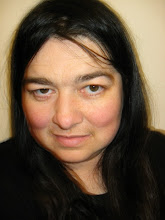Let's begin with the book, shall we? Tales of an African Vet is a charming collection of writings collected by Dr Roy Aronson over several years chronicling his personal experience in the practice of veterinary science. Dr Aronson is himself the founder of group of veterinary clinics in the Cape Town area. Although I have been taking my cats to the same group for a number of years, it is to a different branch. I do not know him personally. To those unfamiliar with South Africa, I had better add that whole country has only one veterinary training facility, the one at Onderstepoort which is affiliated to the University of Pretoria. Thus, through contacts, colleagues and alma mater, the good doctor had access to a number of veterinary doctors practicing their craft in more exotic fields, allowing him to sit in and participate in the treatment of animals ranging from crocodiles, lions, snakes, cheetahs, elephants, parrots and even the odd dog or two. The book is embellished with a collection of beautiful line drawings as well as photographs. For anyone interested in the management of wildlife or conservation, the book is a fascinating eye opener. We are introduced to vets who treat patients that could seriously injure or even kill them, without meaning to. A mere drop of the drug used to anaesthesize an elephant is toxic enough to kill the person administering it. A baby elephant can affectionately put his handler in hospital. In two instances, venomous snakes are treated. In another case, vets and trackers come face to face with a pride of lions. But the treatments are life changing. A lioness facing potential blindness through a congenital eye condition is successfully treated and a delinquent young elephant is given a lesson in manners. In several cases, the lives of young wild animals are saved through the intervention of veterinary science. I'm sure I already mentioned already that these brave doctors, handlers and doctors often risk personal injury in the performance of their duties, but the overriding objective remains to first do no harm.
And that is the overriding theme of my response to the events currently in the news now. The individuals who went to Hwange National Park, did so with the specific intent to do harm.
In my opening paragraph I referred to an event dubbed the Great Karoo Hunt. Here are the details. Early in June 2015, a three-year-old lion managed to escape from the Karoo National Park. This is an area where lions have only recently been reintroduced after the last wild lion in the area was shot and killed in 1842. Park officials stated that the escapee must have used the opportunity presented by a piece of fence damaged by heavy rain, but, as Dr Aronson mentions in his book, lions are members of the cat family and cats have no problem jumping. For almost three weeks, the Karoo lion evaded skilled trackers and lived on the sheep of nearby farmers. Even so, the overriding objective of this hunt for a lion that the Afrikaans speaking locals began to call Koning Gamka (or "King Gamka") remained to bring him back alive. And this they did. You can go to this link to read more about how they finally found their quarry on a mountain side and had to dart the lion without endangering him and without damaging the rotor blades of the helicopter used to track him in that confined space. Hair-raising stuff. Again, this news story has also increased my respect for Dr Aronson and his colleagues.
Above all, Dr Aronson's Tales of an African Vet providing fascinating insight into some of the valuable work being done at Hoedspruit's Endangered Species Center. I began to take an interest in this facility about a little more than a year ago, as this was the home of Gertjie (and now also Mathimba) a duo of orphaned rhinos who were being cared for at this facility. Dr Aronson's book, however, singles out a breeding program also at Hoedspruit, that is slowly helping the cheetah, the world's fastest land mammal charge back from the threat of extinction.
A general misconception is that, if we simply give wild animals enough space and leave them alone, it will be good enough. Unfortunately, I don't think we can afford the luxury of letting nature take its course anymore. We've left it too late for that. Thousands of miles to the north, in Kenya, 42 year old Sudan is the very last male Northern While Rhino alive. He is a returning emigree from a zoo in Czechoslovakia and if the Northern White Rhino survives at all, there is a high likelihood that it will be through artificial insemination and through the use of surrogacy with another species of rhino. Speaking of Czechoslovakia, it is thanks to a breeding program initiated at Prague Zoo that Przewalski's Horse, the last wild horses of Central Asia were brought back from the brink of extinction and re-introduced to the Steppes.
Letting an animal die of natural causes may have been acceptable, back in the day when most humans faced similar odds when sick or injured, but today, with all of the available technology, doing so now only comes across as cruel and voyeuristic. As Dr Aronson argues, if we can record and document an animal's suffering, then why not intervene...?
